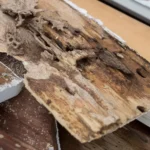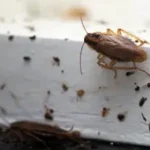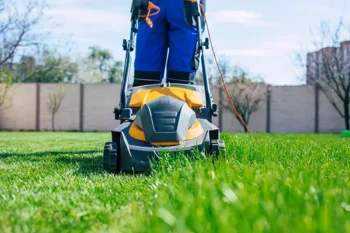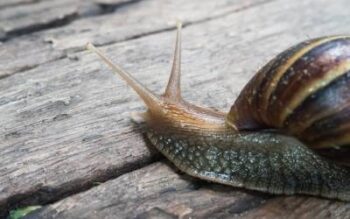
A lush, healthy lawn is a prideful achievement for many Florida homeowners, but maintaining it can be a tough task. Florida’s signature heat and humidity are great for growing grass, but they also create an inviting environment for pests that can quickly damage your yard, if not managed properly.
Pests are a common sight across Florida neighborhoods, but two key strategies can help your lawn thrive: keeping pests from establishing themselves and promoting strong, vigorous grass growth. That’s why we’ve put together this practical checklist, filled with proven spring lawn care tips to help minimize issues from:
- Chinch bugs
- Mole crickets
- Fire ants
- Sod webworms
- Armyworms
- Grubs
- Spittlebugs
- Bermudagrass mites
- Nematodes
Early Spring: Begin Yard Management
In Florida, “early spring” typically arrives by late February or early March as temperatures start to rise. This is the time when your lawn needs a little extra care.
- Remove Yard Debris: Fallen branches, dead leaves, and leftover clutter trap moisture and provide hiding places for pests. They can also encourage fungal problems. Letting debris sit on your lawn invites all kinds of trouble. Make sure to rake it up, bag it, or schedule a cleanup service to keep your yard tidy and less attractive to pests.
- Dethatch If Needed: A light thatch layer is normal, but when it builds up over half an inch thick, it traps moisture and attracts pest activity. If your lawn feels springy or sponge-like under your foot, it likely needs dethatching. You can take care of the issue with a dethatching rake or machine, or you can reach out to our professional lawn care team to handle it for you.
- Test Your Soil’s Health: Imbalanced soil pH and missing nutrients weaken your lawn, making it more vulnerable to pests and disease. Pick up a soil test kit from your local garden center to check your soil’s condition. Follow the instructions carefully and amend your soil as needed. When your soil is properly balanced, your grass can have the strength to defend itself against pests.
- Revitalize Your Yard with Aeration: Compacted soil prevents water, oxygen, and nutrients from reaching the roots, which starves your lawn. Aerating, a process that involves punching small holes throughout the turf, allows the soil to breathe and improves root health. It’s a valuable step for encouraging deeper, stronger roots, though it can be a labor-intensive project. If you’d prefer, our experts can take care of aeration for you.
- Watch for Early Pest Signs: Florida lawn pests become active quickly once spring arrives. Be alert for signs like tiny mounds of dirt or raised tunnels, which might indicate grub or mole cricket activity. Spotting early warning signs now can save you from much bigger problems as the season progresses.
Mid-Spring: Create a Routine Upkeep Plan
Florida’s warm climate keeps lawn pests active nearly all year long, which makes consistent pest prevention incredibly important. After you finish your early spring lawn care, be sure to revisit your yard about four to eight weeks later with these mid-spring strategies:
- Block Weeds Before They Emerge: Apply a pre-emergent herbicide to stop weeds like crabgrass, before they have a chance to sprout. Weeds steal water and nutrients from your lawn, which can weaken it and make it more vulnerable to pest infestations.
- Fine-Tune Your Mowing Routine: By mid-spring, mowing should become a regular part of your lawn care schedule. Avoid trimming the grass too short, which can cause stress. Stick to the “one-third rule,” cutting no more than one-third of the grass blade each time. For St. Augustine lawns, leave the grass a little taller to help deter chinch bugs naturally.
- Feed Your Lawn Based on Soil Needs: Use your soil test results to choose the right fertilizer. Grass that’s properly fed can handle pest pressure with ease. Just be cautious not to overdo it, too much fertilizer can actually encourage certain pests to move in.
- Don’t Wait For Grubs to Return: If you’ve dealt with grubs before, now’s the right time to apply a preventive treatment. Grubs feed on grass roots, and if left unchecked, they can quickly cause large patches of dead turf.
- Watch for Early Chinch Bug Activity: St. Augustine grass is particularly prone to chinch bug damage. Keep an eye out for areas of grass that turn yellow or brown, especially in sunny spots, as these can be early warning signs.
- Catch Sod Webworms and Armyworms Quickly: Brown spots or shredded, chewed-up grass blades often signal the presence of sod webworms or armyworms. Catching them early can help protect your entire lawn from widespread damage.
- Act Fast Against Fire Ants: If you notice a fire ant mound, take action immediately. Fire ants are more than just an inconvenience, they can damage your lawn and pose a painful risk to people and pets.
- Inspect Regularly for Signs of Pests: Routine lawn checks are one of the best defenses against pest problems. Look out for dead or patchy grass, holes in the ground, an increase in birds pecking at the lawn (they could be hunting grubs), visible insects at the surface, or a spongy feeling when walking on the grass.
- Water the Right Way: Aim for deep, infrequent watering to encourage strong root systems and reduce pest and fungal issues. Avoid watering every day, which can create persistently moist conditions that attract pests.
- Consider Installing a Professional Irrigation System: Professional irrigation systems help you water efficiently without any guesswork. Our irrigation experts design systems specifically for Florida’s climate, your soil type, and your property layout, ensuring a seamless fit with your home’s plumbing and electrical setup.
Thinking About Purchasing DIY Chemicals?
We advise staying cautious of DIY treatments. Many store-bought lawn pesticides and insecticides can harm your grass or surrounding plants if not applied properly. If you’re feeling the urge to turn to chemical solutions, it’s a good idea to reach out to the professionals.
Our licensed technicians know how to apply treatments accurately for the best results, while minimizing risks to your loved ones and the surrounding environment.
Natural Tips to Keep Lawn Pests Away
- Boost Lawn Density: A thick, thriving lawn naturally leaves fewer opportunities for pests to interfere.
- Invite Beneficial Bugs Into Your Yard: Attract helpful insects like ladybugs and lacewings to your yard. They prey on many common lawn pests and help maintain a healthier balance naturally.
Let the Lawn Pest Professionals Take It from Here
If you’re noticing signs of pest activity or simply want the reassurance of expert care, our skilled team is ready to help. We’ll inspect your yard, identify any trouble spots, and create a tailored treatment plan to help you grow a greener, healthier, pest-free lawn.
Contact us today to get started and help your lawn thrive this spring!





